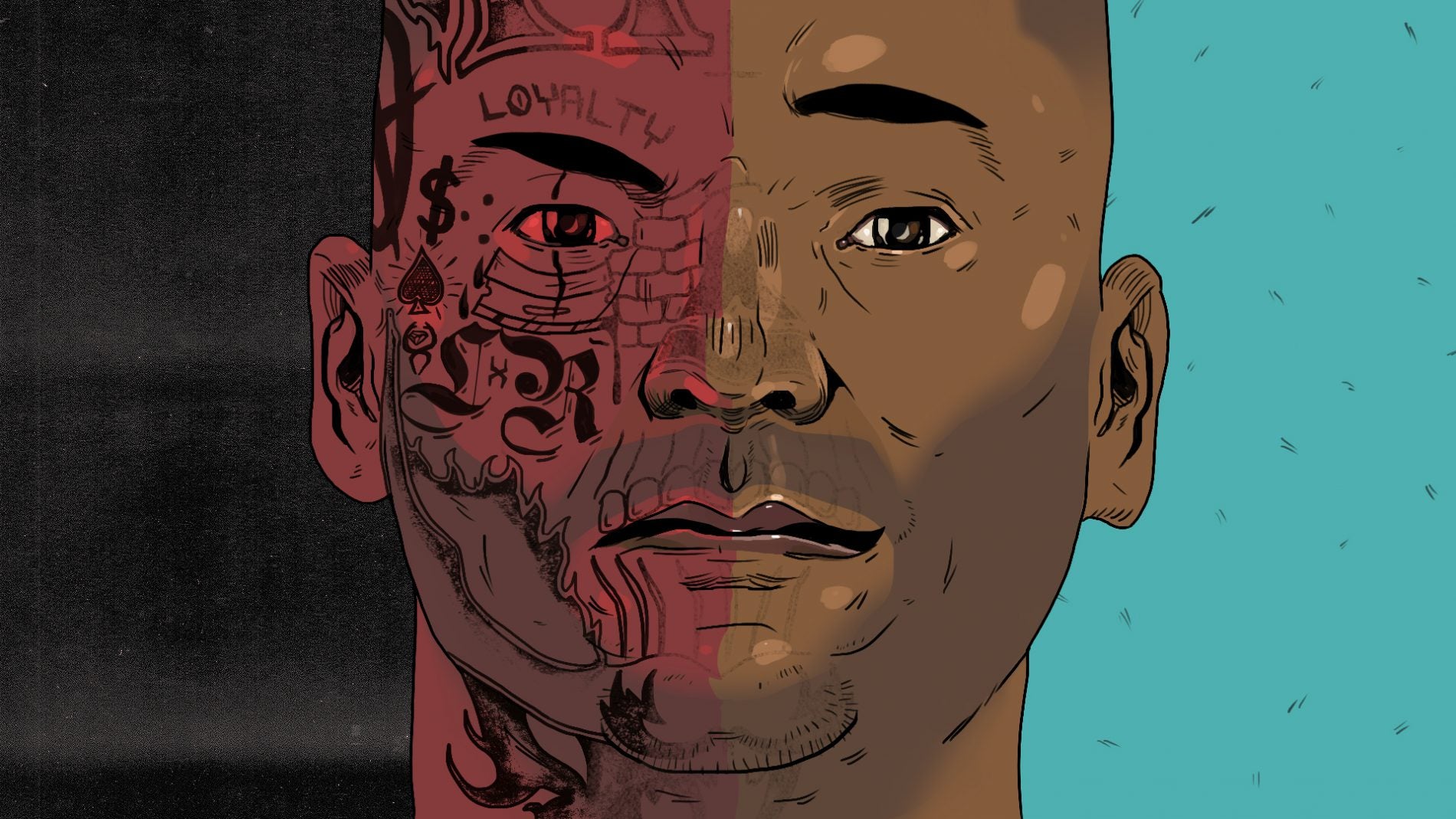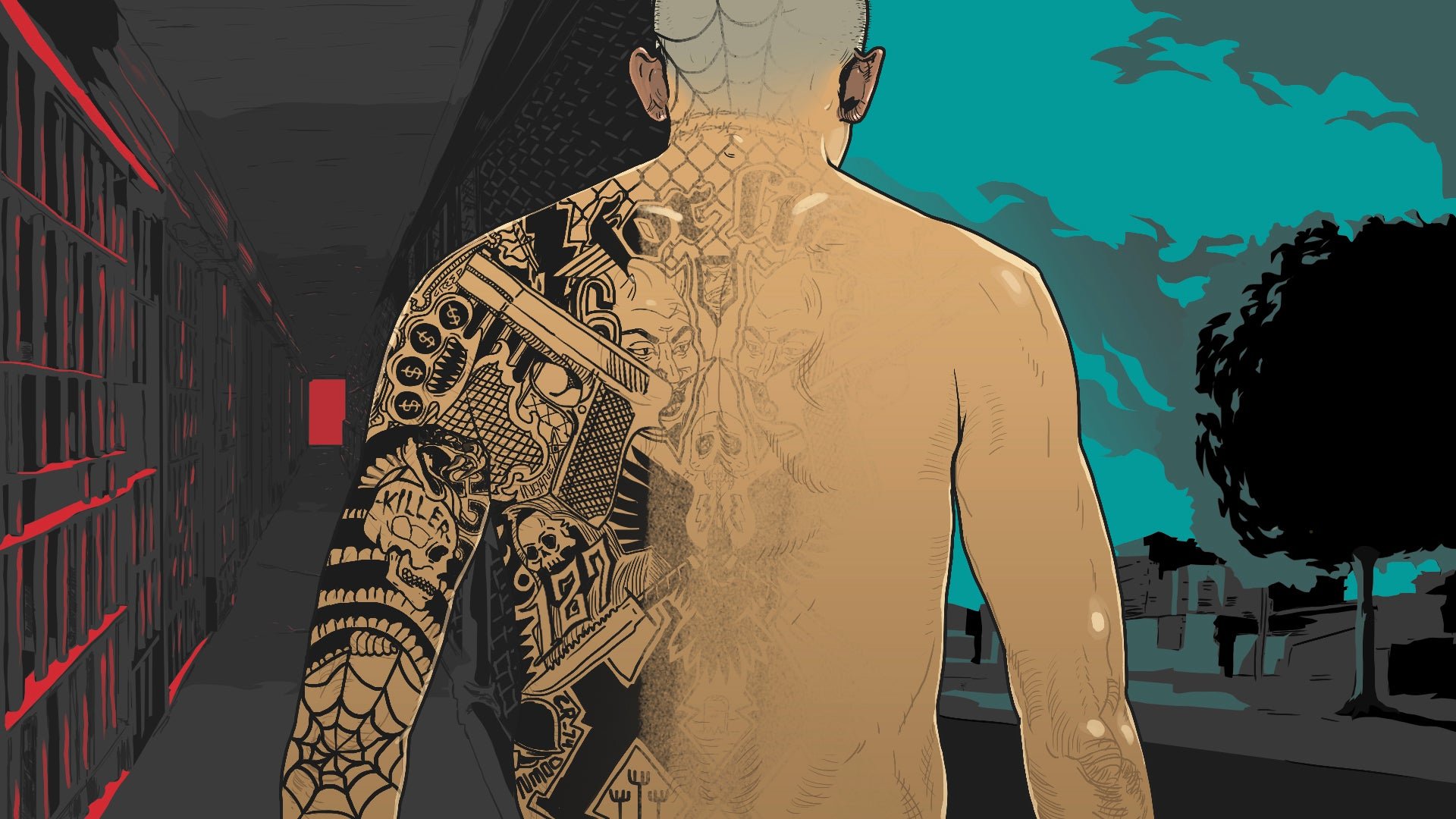“It’s like a baptismal”: Prison tattoo removal gives ex-offenders a chance at a new life
When Robert Gurney’s younger sister married a Jewish chef, he wasn’t invited to the wedding. Gurney has been in and out of Los Angeles prisons for two decades, but it was the racist symbols tattooed on his head, neck and hands that kept him out of the family festivities. His sister didn’t want to insult her future-in-laws.


When Robert Gurney’s younger sister married a Jewish chef, he wasn’t invited to the wedding. Gurney has been in and out of Los Angeles prisons for two decades, but it was the racist symbols tattooed on his head, neck and hands that kept him out of the family festivities. His sister didn’t want to insult her future-in-laws.
At the time he got the tattoos, which include a swastika symbol, he “didn’t really think about who they might offend,” Gurney, 38, told me over the phone from the Men’s Central Jail in Los Angeles. Now he realizes that those tattoos “shut a lot of doors.”
Ex-offenders pay a high price for their body art. Tattoos could brand them for life, hurting their prospects to find jobs, stay out of prison and even mend family ties. But with tattoo removal procedures costing hundreds or thousands of dollars, few former inmates have the resources to escape the visible markings of their criminal life.
That’s given rise to tattoo removal programs for inmates and ex-convicts across the US. They’re proving so popular, the number of these programs has exploded—and even so, are still struggling to keep up with demand.
“Getting tattoos removed is like a baptismal,” says Mark Drevno, founder of the non-profit Jails to Jobs, who says a section on tattoo removal is the busiest part of the organization’s website. “Not only does it help them get a job, but it helps them heal the past.”
Scarlet letter
In 2014, Kaitlyn Harger, now an assistant professor at Florida Gulf Coast University, found a link between tattoos and recidivism rates. An economics PhD student at the time, Harger looked at data from the Florida Department of Corrections and found that ex-offenders with tattoos ended up back in prison about 3.4 years faster than those without tattoos. Among inmates that had tattoos, those who had visible markings, on their face or hands for example, ended up back in prison nearly two years faster than those who had tattoos that were easier to cover up.
It’s not necessarily that employers are opposed to tattoos, which have gone almost mainstream in certain social circles. Indeed, about 29% of Americans have tattoos, up from 21% four years ago. Some companies, like Starbucks, have changed their policies to allow for employees to be inked.
But Harger says that ex-convicts already face so many challenges in getting potential employers to trust them that tattoos are just one more “Scarlet letter” that connects them to their criminal activity. “My general feeling from the research is that it’s hard to separate the tattoo from the person,” she says. “Even if you were trying with every effort of good faith, it would be difficult to do that.”
Ramon Martinez, 38, is covered in tattoos, but thinks the ones on his neck, which include the names of his daughter, her mother and a previous girlfriend, make him less presentable to employers. “It’s hard for me to get a job when I am all blasted up,” says Martinez, who got his first tattoo when he was 13 years old. “People seem to be intimidated by me.”
The LA native has been in and out of prison since 1997. He told me that the longest he’s been out during those two decades is for a year. “I’m just tired of people saying that this might be the reason why you can’t find a job,” he says.
The tattoo that’s caused Jose Vasquez, 37, the most grief is a Playboy bunny symbol he had tattooed on his left forearm when he was a teenager. He got it because he thought of himself as a “ladies man,” but realized that it was also a gang symbol when he was mistaken for a member of the Playboys, a mostly Hispanic LA gang.
He opted to get the tattoo removed when he ended up back in prison last year. As it has faded, Vasquez has begun to see himself in a new light. “It’s sparked a lot of change and helped me think more about things I want to do,” says Vasquez, who has three children aged 20, 13 and 11. “I can venture out with my children and even job wise.” He says that getting the tattoo removed has given him the confidence to “actually go try to present myself to employers” after he’s scheduled to be released in January 2017.

The program’s spread
Like most tattoo removal programs, LA County’s move towards free tattoo removals grew out of a larger program to help inmates find employment after their release. A 2008 Urban Institute Study followed 740 male prisoners in three states after their release. After eight months 65% of the former inmates had held a job during that time, but only 45% were still employed.
Law enforcement officers and criminal justice reformers have a vested interest in programs that might have a chance, however slim, of keeping ex-offenders from cycling in and out of prison’s swinging door. About half of the federal offenders released in 2005 were rearrested within eight years, according to a U.S. Sentencing Commission study. The National Institute of Justice found that two-thirds of state offenders were arrested within three years of their 2005 release.
Though illegal, prisoners use makeshift tools like pen ink and melted plastic to create tattoos, which can signal an inmate’s place in the prison social order, their gang affiliation and a host of other dubious activities. In his book Codes of the Underworld, Diego Gambetta compared tattoos to a professional resume denoting acts of violence. A teardrop tattoo, for example, may symbolize a murder.
Daniel, who is from South Central LA, told me that he looked into getting his tattoos removed when he was paroled on January 11, but didn’t have the money. The 26-year-old got a “B” tattooed on one side of his face and a devil on the other side of his face and neck when he landed in prison about two years ago, signifying his membership in another LA street gang called the Bloods. So when he landed back in prison for a 16-month term in the middle of March, he decided to take advantage of LA County’s free tattoo removal program.
With modern day laser tattoo removal, the light breaks up ink pigment in the skin, gradually—and painfully—fading it over multiple sessions. “The pain is 20 times as a tattoo,” says Daniel (a pseudonym as he declined to give his name). “It makes me want to cry, but I guess I deserve that pain because I was stupid for getting them.”
In 2012, LA prison officials bought a tattoo removal machine and had in-houses nurses trained on the procedure. Money from the inmate commissary, along with vending machines and telephone calls fund the endeavor. Within 18 months, the waiting list for tattoo removals grew to three months long. So far nearly 3,000 inmates have had their tattoos removed through the program. They’ve since bought three more machines: one for the women’s facility and two for the North County facilities. Now they get calls from other jails and state prisons looking to mimic the program.
There are more than 200 free and low-cost tattoo removal programs in 37 states, according to Jails to Jobs. Last year Travis County Jail in Austin, Texas partnered with a local laser spa to offer pre-release prison tattoo removals and the New Castle Correctional Facility, run by the private prison company Geo Group, began offering Indiana’s first tattoo-removal program. Inmates have to pay a few dollars for the procedure, but there’s already a waiting list.
The procedure has gotten so popular that Fresh Start Tattoo Removal, a 10-year-old New York non-profit, temporarily stopped accepting new applicants in late April to work through a backlog of 1,800 ex-convicts and human trafficking victims around the country who’ve applied to have their visible tattoos removed. Founder Dr. David J. Ores said in an email that demand has been so high that he had to change the system of who gets selected to a daily random lottery draw.
Third Reich removal
Gurney started getting visible white supremacist tattoos when he landed in state prison for the first time at the age of 18.
“I started off real young as a kid and wanted to be part of something,” says Gurney. “I wanted to be like all the other big boys.” He says that as he drifted in and out of jail, he kept getting tattoos to establish himself in the prison yard.
Like all the men I spoke with, Gurney didn’t want to talk about the crimes that landed him in prison. An officer who arranged the interviews says that they were all currently convicted of non-violent and non-sexual crimes.
Gurney eventually realized his tattoos were keeping him from being a part of life outside of the prison yard. He had two children—a daughter, now 19, and a son who is 12.
“I tried to go their dance recitals and Little League games. I tried to go their open houses” at school, says Gurney. “To go there looking like something out of the Third Reich is out of line.”
So when Gurney went back into the jail in January, he decided to shed some of his past through the tattoo removal program. Now that the tattoos have faded, “I felt the change inside of me and waking up to what these tattoos mean,” he says.
Gurney believes that getting the tattoos removed will help him heal his relationship with family members, including his mom, siblings and kids who have wanted him to remove the tattoos for years. “I think about all the years I shorted her in terms of everything these tattoos represent,” he says about his daughter, who now has a son of her own. “Maybe now I can make it up.”